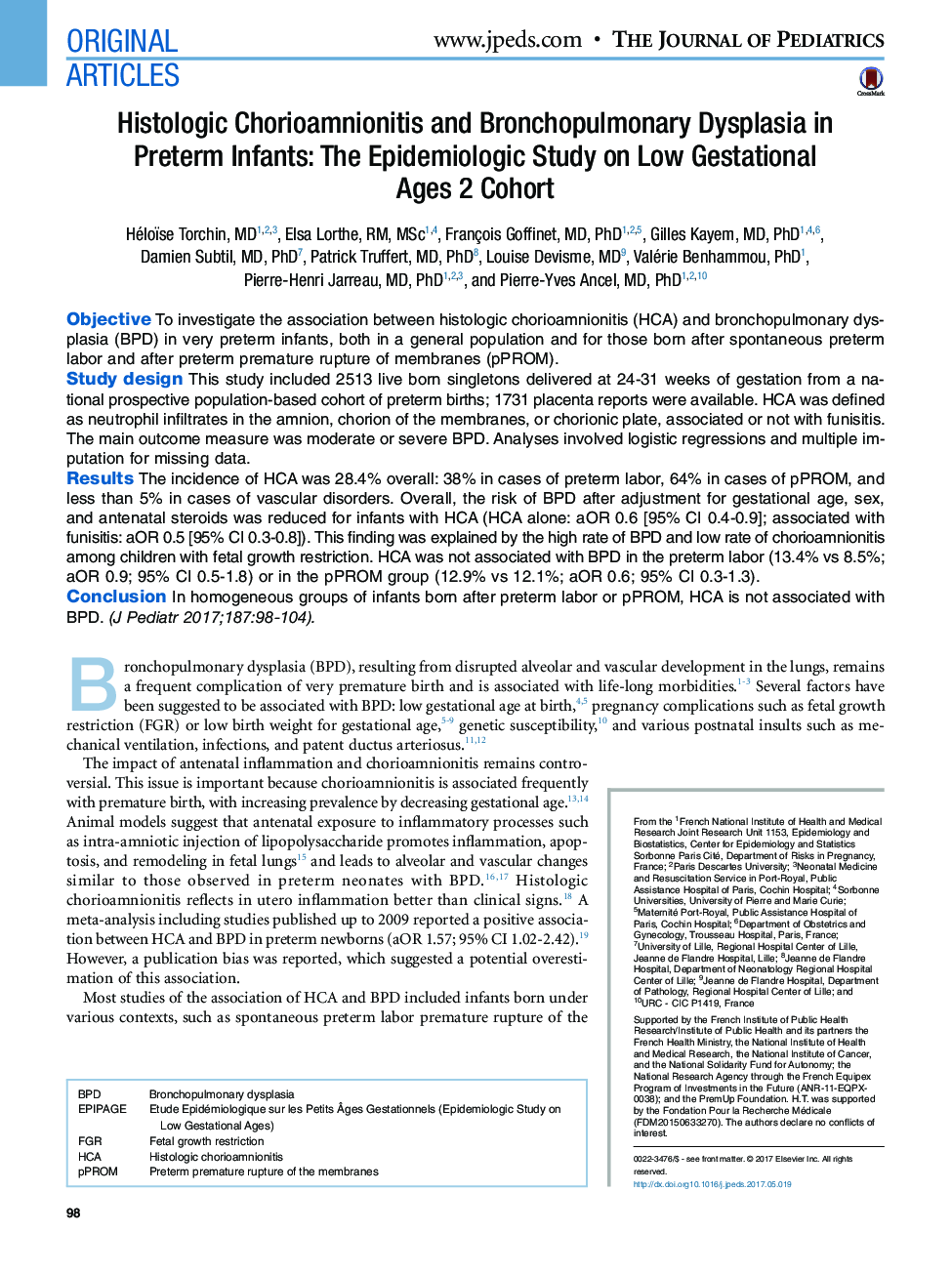| Article ID | Journal | Published Year | Pages | File Type |
|---|---|---|---|---|
| 5719040 | The Journal of Pediatrics | 2017 | 10 Pages |
ObjectiveTo investigate the association between histologic chorioamnionitis (HCA) and bronchopulmonary dysplasia (BPD) in very preterm infants, both in a general population and for those born after spontaneous preterm labor and after preterm premature rupture of membranes (pPROM).Study designThis study included 2513 live born singletons delivered at 24-31 weeks of gestation from a national prospective population-based cohort of preterm births; 1731 placenta reports were available. HCA was defined as neutrophil infiltrates in the amnion, chorion of the membranes, or chorionic plate, associated or not with funisitis. The main outcome measure was moderate or severe BPD. Analyses involved logistic regressions and multiple imputation for missing data.ResultsThe incidence of HCA was 28.4% overall: 38% in cases of preterm labor, 64% in cases of pPROM, and less than 5% in cases of vascular disorders. Overall, the risk of BPD after adjustment for gestational age, sex, and antenatal steroids was reduced for infants with HCA (HCA alone: aOR 0.6 [95% CI 0.4-0.9]; associated with funisitis: aOR 0.5 [95% CI 0.3-0.8]). This finding was explained by the high rate of BPD and low rate of chorioamnionitis among children with fetal growth restriction. HCA was not associated with BPD in the preterm labor (13.4% vs 8.5%; aOR 0.9; 95% CI 0.5-1.8) or in the pPROM group (12.9% vs 12.1%; aOR 0.6; 95% CI 0.3-1.3).ConclusionIn homogeneous groups of infants born after preterm labor or pPROM, HCA is not associated with BPD.
